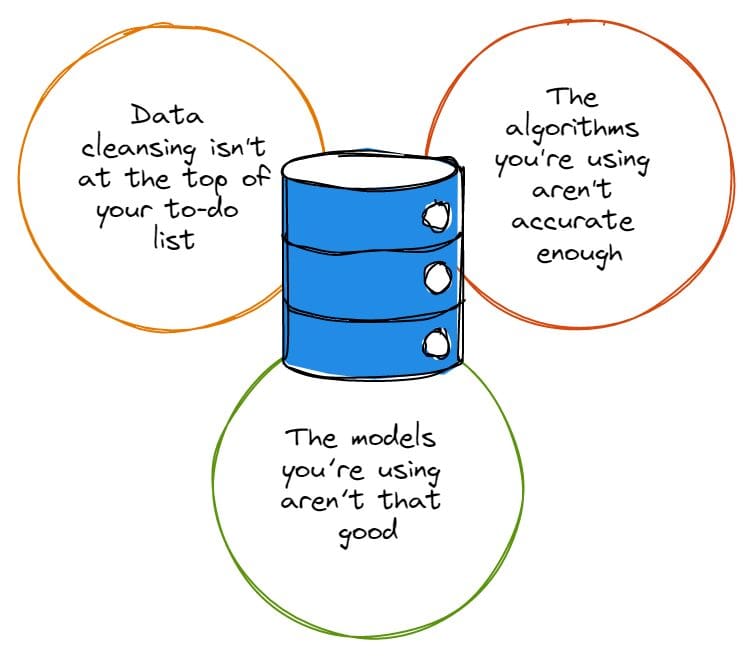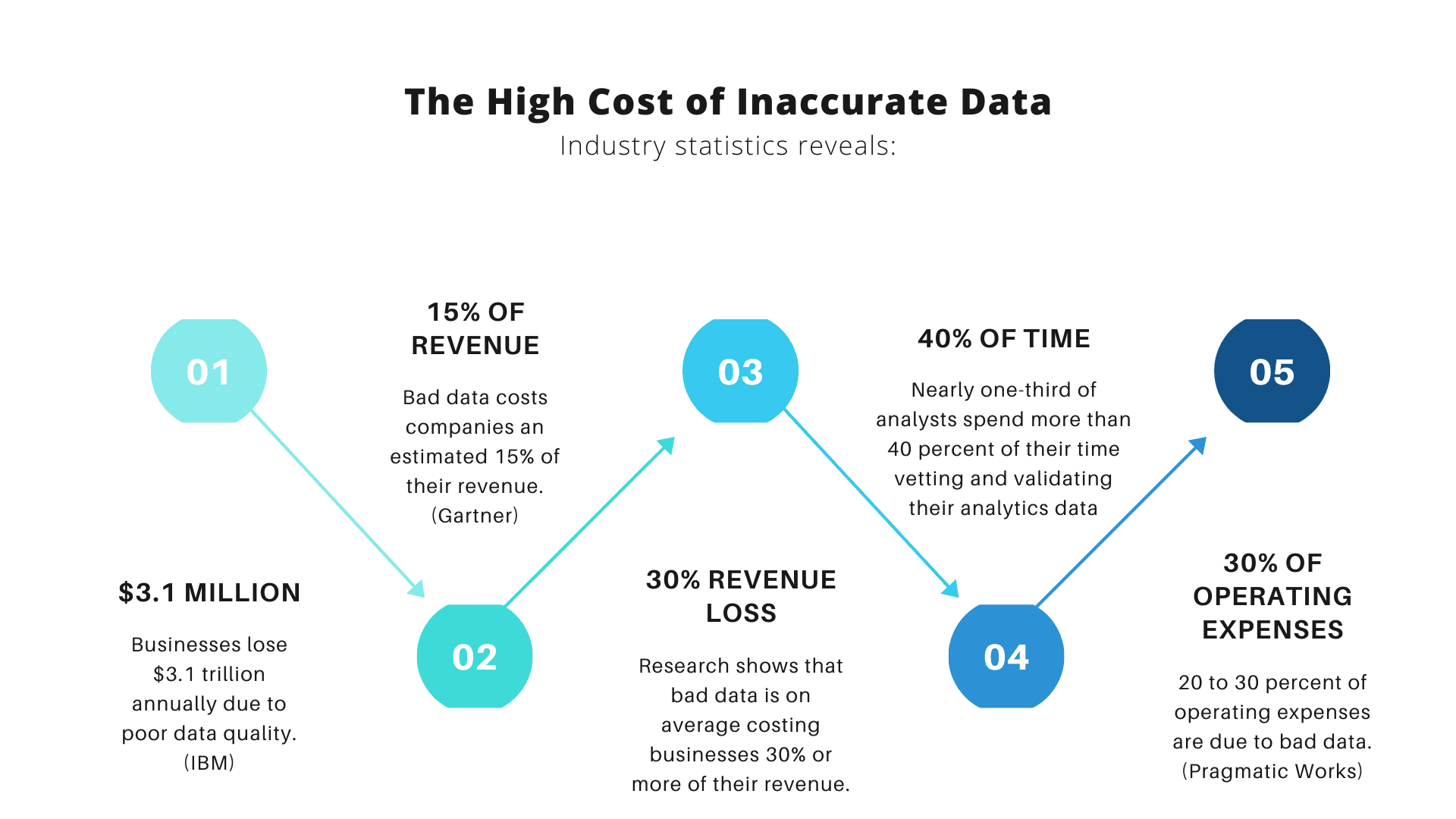3 Mistakes That Could Be Affecting the Accuracy of Your Data Analytics
As more companies are starting to rely on big data, more companies are also misanalyzing the data that they receive. Is your company one of them? These are the top three mistakes that companies commonly make that affect the accuracy of their data analytics.

Image by Editor
It's 2023, which means that most businesses in most industries are collecting insights and driving smarter decisions with the help of big data. This doesn't come as much of a surprise these days -- the ability to gather, categorize, and analyze big sets of data is immensely useful when it comes to making data-driven business decisions.
And, as a growing number of organizations embrace digitization, the ability to grasp and rely on data analytics' usefulness will only continue to grow.
Here's the thing about big data, though: as more organizations come to rely on it, the bigger the chance becomes that more of them will use big data incorrectly. Why? Because big data and the insights it offers are only useful if organizations are accurately analyzing their data.

Image from dataladder
To that end, let's make sure that you're avoiding some common mistakes that often affect the accuracy of data analytics. Read on to learn about these issues and how you can avoid them.
Data Cleaning Isn't at the top of your To-do List
Before we go pointing fingers, we need to admit that most sets of data have their fair share of errors, and these errors don't do anyone any favors when it comes time to analyze data. Whether they're typos, weird naming conventions, or redundancies, errors in data sets muddle the accuracy of data analysis.
So before you get too excited about diving deep into the data analytics rabbit hole, you first need to make sure that data cleansing is at the top of your to-do list and that you're always properly cleansing your data sets. You may be saying, "hey, data cleansing is too time-consuming for me to bother with", to which we nod our heads in sympathy.
Luckily for you, you can invest in solutions such as augmented analytics. This leverages machine learning algorithms to accelerate the rate at which you perform your data analysis (and it improves the accuracy of your analysis, too).
The bottom line: no matter what solution you use to automate and improve your data cleansing, you still need to do the actual cleansing -- if you don't, you'll never have the proper foundation on which to base accurate data analysis.
The Algorithms you're using aren't Accurate enough
As is the case with data sets, most algorithms aren't one hundred percent perfect; most of them have their fair share of flaws and simply don't work the way you'd like them to every time you use them. Algorithms with a bunch of imperfections can even ignore data that are essential to your analysis, or they may focus on the wrong kind of data that isn't actually that important.
It's no secret that the biggest names in tech are constantly scrutinizing their algorithms and tweaking them as close to perfection as possible, and it's because so few algorithms are actually flawless. The more accurate your algorithm is, the greater the guarantee that your programs are accomplishing their goals and doing what you need them to be doing.
Additionally, if your organization staffs even just a couple of data scientists, it should make sure that those data scientists are regularly making updates to the algorithms that their data analysis programs -- it may even be worthwhile to establish a schedule that holds teams accountable for maintaining and updating their data analysis algorithms following an agreed-upon schedule.
Even better than that may be establishing a strategy that leverages AI/ML-based algorithms, which should be able to automatically update themselves.
The Models You’re using Aren’t that Good
Mostly understandably, a lot of business leaders who aren't directly engaged with their data analytics teams don't realize that algorithms and models aren't the same things. In case YOU weren't aware, either, remember that algorithms are the methods we use to analyze data; models are the computations that get created by leveraging an algorithm's output.
Algorithms can crunch data all day long, but if their output isn't going through models that are designed to check the subsequent analysis, then you're not going to have any usable or useful insights.
Think of it like this: if you've got fancy algorithms crunching data but don't have any insights to show for it, you're not going to make data-driven decisions any better than you were before you had those algorithms; it'd be like wanting to build user research into your product roadmap but ignoring the fact that, for example, the market research industry generated $76.4 billion in revenue in 2021, representing a 100% increase since 2008.
Your intentions may be admirable, but you need to make use of the modern tools and knowledge available to you to glean those insights or build that user research into your roadmap to the best of your abilities.
It's unfortunate that suboptimal models are a surefire way to make a mess of your algorithms' output, no matter how sophisticated those algorithms are. It's therefore essential that business executives and technical leaders more closely engage their data analysis experts in order to create models that are neither too complicated nor too simple.
And, depending on how much data they're working with, business leaders may choose to go through a few different models before they settle on one that best suits the volume and type of data they need to handle.
Conclusion
At the end of the day, if you want to make sure your data analysis isn't consistently wrong, you need to also remember to never fall victim to bias. Bias is unfortunately one of the greatest hurdles that need to be overcome when it comes to maintaining the accuracy of data analytics.
Whether they're influencing the type of data that's being collected or impacting the way business leaders interpret data, biases are varied and often difficult to pin down -- executives need to do their best to identify their biases and forgo them in order to benefit from consistently accurate data analytics.
Data is powerful: when wielded properly, it can grant business leaders and their organizations immensely useful insights that can transform how they develop and deliver their products to their customers. Just make sure that you're doing everything in your power to ensure your data analytics are accurate and not suffering from the easily avoidable mistakes we've outlined in this article.
Nahla Davies is a software developer and tech writer. Before devoting her work full time to technical writing, she managed — among other intriguing things — to serve as a lead programmer at an Inc. 5,000 experiential branding organization whose clients include Samsung, Time Warner, Netflix, and Sony.
